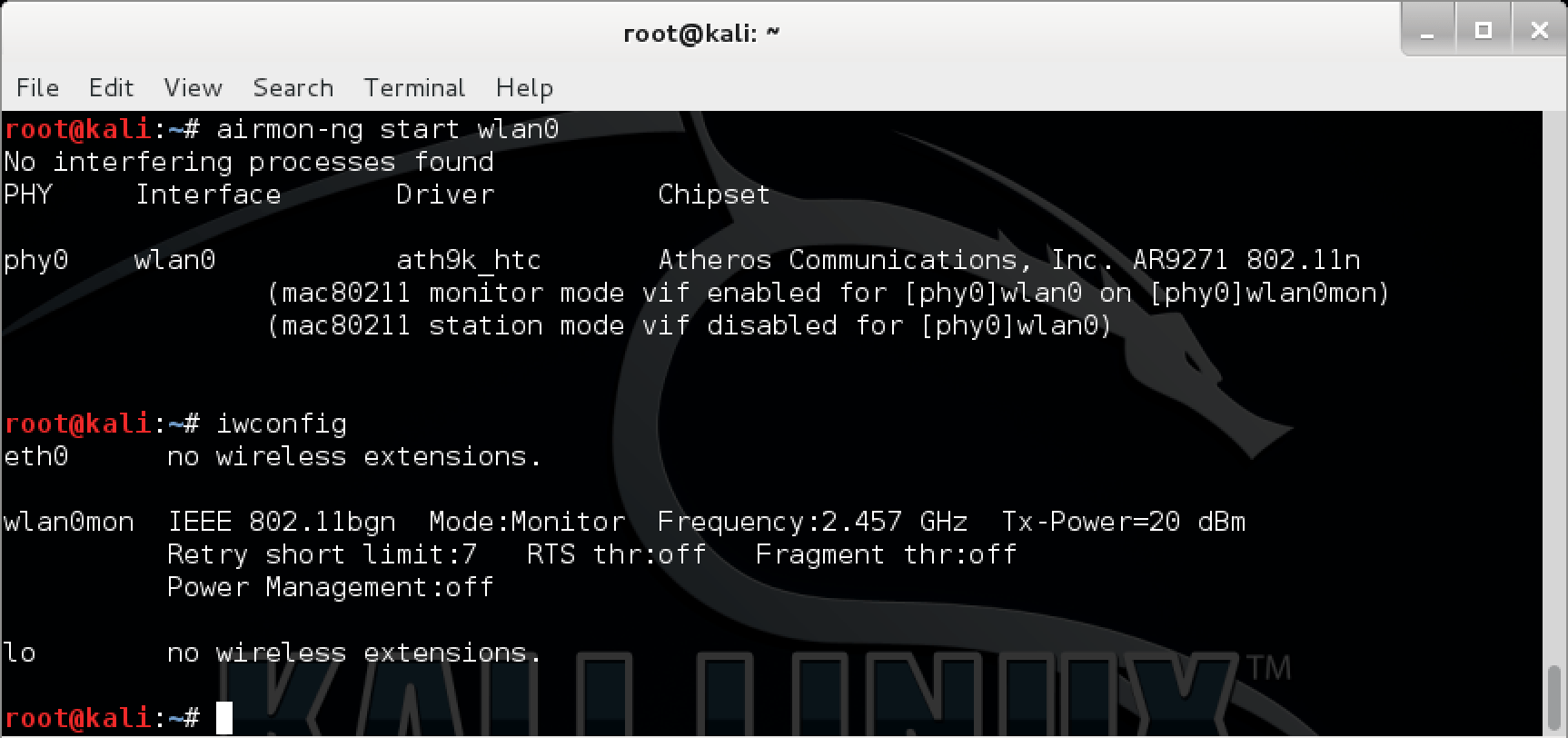A short while ago, we packaged and pushed out a few important wireless penetration testing tool updates for aircrack-ng, pixiewps and reaver into Kali’s repository. These new additions and updates are fairly significant, and may even change your wireless attack workflows. Here’s a short run-down of the updates and the changes they bring.
Pixiewps – Bruteforce WPS pins in seconds
Pixiewps is a tool used for offline brute forcing of WPS pins, while exploiting the low or non-existing entropy of some wireless access points also known as the pixie dust attack, discovered by Dominique Bongard (slides and video). The pixiewps tool (developed by wiire), was born out of the Kali forums, and the development of the tool can be tracked throughout an interesting forum post.
In the correct environment, pixiewps dramatically speeds up the WPS brute force attack time from what was taking up to 12 hours to a a few seconds. This new attack is mind numbing, and we are somewhat surprised that it hasn’t been discussed on a wider basis. Watch our following video closely, and see how we extract the WPA shared key of this EdiMAX wireless access point in a few seconds using updated versions of pixiewps and reaver, already packaged in Kali:
[embedded content]
Aircrack-ng v1.2 RC2 Update
Aircrack-ng is the de facto penetration tool suite – essential for any wireless penetration tests or assessments. In this latest Aircrack-ng release, amongst the normal bug fixes and code improvements there has been a significant change to airmon-ng, the tool used to put wireless cards into monitor mode. Other new and notable features are that airtun-ng is now able to decrypt WPA as well as several new airodump-ng flags, such as – -wps and – -uptime.

Also notice the new naming convention of the wireless virtual interfaces – wlanXmon, as opposed to monX.
Goodbye mon0, hello wlan0mon!
For the latest few releases, the aircrack-ng suite had bundled with it airmon-zc, which uses an improved method of placing wireless cards into monitor mode, as well as more verbose output options. With the release of Aircrack-ng 1.2 RC2, airmon-zc has officially replaced the original aircrack-ng, as the new standard.
More verbose airmon-ng output
When things are going right, everything is great! However when this isn’t the case, and you need to troubleshoot wireless issues, you can now use a single command airmon-ng –verbose start wlan0 to gather all the relent information needed:
root@kali:~# airmon-ng --verbose start wlan0
No interfering processes found
No LSB modules are available.
Distributor ID: Kali
Description: Kali GNU/Linux 1.1.0
Release: 1.1.0
Codename: moto Linux kali 3.18.0-kali3-amd64 #1 SMP Debian 3.18.6-1~kali2 (2015-03-02) x86_64 GNU/Linux
Detected VM using dmi_info
This appears to be a VMware Virtual Machine
If your system supports VT-d, it may be possible to use PCI devices
If your system does not support VT-d, you can only use USB wifi cards K indicates driver is from 3.18.0-kali3-amd64
V indicates driver comes directly from the vendor, almost certainly a bad thing
S indicates driver comes from the staging tree, these drivers are meant for reference not actual use, BEWARE
? indicates we do not know where the driver comes from... report this X[PHY]Interface Driver[Stack]-FirmwareRev Chipset Extended Info K[phy0]wlan0 rtl8187[mac80211]-N/A Realtek Semiconductor Corp. RTL8187
(mac80211 monitor mode vif enabled for [phy0]wlan0 on [phy0]wlan0mon)
(mac80211 station mode vif disabled for [phy0]wlan0) root@kali:~#
You can find aircrack-ng’s full change log at the following address: aircrack-ng.org/doku.php?id=Main#changelog.
The reaver project was originally developed by Craig Heffner, and the last release was 1.4. As the project seems to have been abandoned, several forks have cropped up – one belonging to a member of the Kali forums, t6_x, who has also integrated the pixiewps attack into a newly minted 1.5.2 release. This new version implements an array of improvements on the original version, and will hopefully be activity maintained by the community.
One of the advantages of being a Kali forum moderator is that you get to witness the community grow and interact. Since the original pixiewps thread started by soxrok2212, it has received over 300 responses, bringing about the implementation of new ideas and updates to the tool. Watching this project emerge from a single forum post all the way to the release of the tool, and seeing the co-operation between the various tool developers while working to get interoperability between their tools was a real privilege.
Stay fresh with Kali-Linux
You don’t need to do anything special to get this awesome tool chain, just keep your Kali-Linux up-to-date:
apt-get update
apt-get dist-upgrade
Happy penetration testing!

